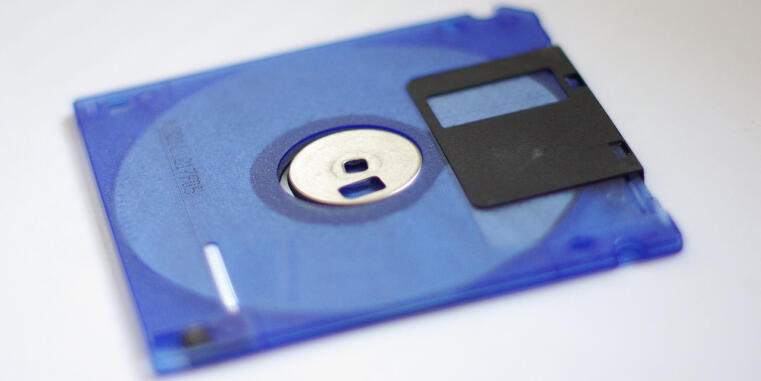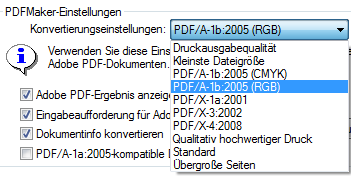Creation of a PDF/A File
PDF/A-compliant files can be created using the Adobe Acrobat Professional software or the free PDFCreator, for example. Also, many typesetting programs already offer direct export to these formats, e.g. OpenOffice.org (from version 3.0), LibreOffice.org, Adobe InDesign (from CS 2), Corel Draw Graphics Suite from X4 (provided free of charge to students of the University of Münster by the CIT) or Microsoft Office 2007 (from Service Pack 2). Find out about the options of your software (e.g. consult the help or printing options of the program).
Below you will find brief instructions for PDF/A creation [in German!] from common text typesetting programs and detailed instructions for MacOS X or Windows in combination with Adobe Acrobat Professional.
Quick guide to PDF/A creation from popular text typesetting programs
How to create a PDF/A file with Adobe Acrobat
You can find further detailed documentations (for example also for LaTeX) as PDF file here [German only]:
Instructions for creating and correcting PDF documents (Sabine Henneberger, Humboldt Universität Berlin)
Instructions for creating the PDF/A or PDF/X file (Universitätsverlag of TU Berlin)
Creating powerful PDF documents with LaTeX (Sascha Beuermann, Universität Hannover)
If you do not have access to the necessary software, you can use the Microsoft Office package and Adobe Acrobat Professional DC to convert your documents to PDF/A files in the University and State Library of Münster's DigiLab.


